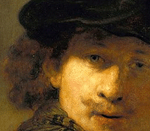
"Parable of the Unforgiving Servant"
In the Parable of the Unforgiving Servant, Jesus is presenting a new principle that is similar to the basis of the forgiveness command for believers found in Ephesians 4:32, "And be ye kind to one to another, tenderhearted, forgiving one another, even as God for Christ’s sake hath forgiven you." Jesus is teaching His disciples pre-cross, and therefore in the pre-church age, but the basis for forgiveness is the same. Because God has forgiven us, we are to forgive each other. Therefore, because we have received much grace, "while we were yet sinners Christ died for us" (Romans 5:8), we are commanded to give that same grace to others. In the Parable of the Unforgiving Servant, the first servant’s debt was forgiven, and he was not required to repay until his unforgiving nature was discovered. In contrast, our sin debt was paid in full by Christ and is the only basis for God’s forgiveness. We cannot repay our debt to God or earn our salvation. It is a gift of grace (Ephesians 2:8-9).
Therefore, in the Parable of the Unforgiving / Unmerciful / Unjust Servant, Jesus is teaching His disciples, that forgiveness should be in like proportion to the amount forgiven. The first servant had been forgiven all, and he then should have forgiven all. In like manner, a child of God by faith through Christ has had all sins forgiven. Therefore, when someone offends or sins against us we should be willing to forgive him from a heart of gratitude for the grace to which we ourselves are debtors.
Claude Vignon (19 May 1593 – 10 May 1670) was a French painter, printmaker and illustrator who worked in a wide range of genres. He painted portraits, genre scenes and religious works. During a period of study in Italy, he became exposed to many new artistic currents, in particular through the works of Caravaggio and his followers, Guercino, Guido Reni and Annibale Caracci. A prolific artist, his work has remained enigmatic, contradictory and hard to define within a single term or style. His mature works are vibrantly colored, splendidly lit and often extremely expressive. Vignon worked in a fluent technique, resulting in an almost electric brushwork.